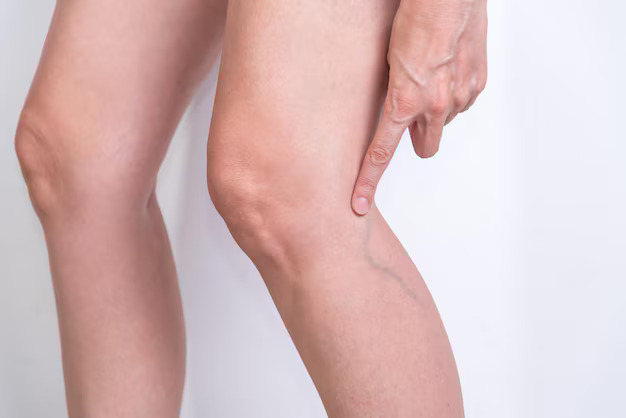Joint pain can be a significant obstacle, affecting millions of people around the world. Whether caused by aging, injuries, or medical conditions such as arthritis, joint pain can severely impact one’s quality of life. Common joint pain issues usually target the shoulders, hips, knees, ankles, elbows and so on. Fortunately, advancements in medical technology have led to the development of minimally invasive treatments that offer relief from joint pain while minimizing recovery time and discomfort. In this article, we will explore the various aspects of joint pain and delve into the realm of minimally invasive treatments, offering hope for those seeking effective solutions.
Table of Contents
Understanding Joint Pain
Types of Joint Pain
Joint pain can manifest in various forms, including acute and chronic pain. Acute pain often results from injuries, strains, or sprains, while chronic pain is typically associated with conditions like osteoarthritis, rheumatoid arthritis, and gout.
Causes of Joint Pain
Numerous factors contribute to joint pain. Aging plays a significant role, as cartilage naturally deteriorates over time. Additionally, injuries, repetitive motions, and genetics can increase the likelihood of developing joint pain.
The Significance of Minimally Invasive Treatments
Advantages Over Traditional Surgery
Minimally invasive treatments have gained popularity due to their numerous benefits. These procedures involve smaller incisions, reduced scarring, less pain, and quicker recovery times compared to traditional open surgeries.
Popular Minimally Invasive Procedures
Arthroscopy: This procedure utilizes a tiny camera to diagnose and treat joint problems. It involves minimal incisions and allows for precise surgical interventions.
Laser Therapy: Utilizing focused laser energy, this treatment aims to reduce inflammation and stimulate tissue regeneration, providing relief from pain.
Radiofrequency Ablation: This technique uses heat to interrupt pain signals from nerves, providing extended pain relief for patients.
Exploring Non-Surgical Alternatives
Physical Therapy
Physical therapy plays a crucial role in alleviating joint pain. Customized exercises and stretches can improve joint flexibility, strength, and overall function.
Medications for Joint Pain
Over-the-counter pain relievers, nonsteroidal anti-inflammatory drugs (NSAIDs), and prescription medications can provide temporary relief from joint pain and inflammation.
The Role of Regenerative Medicine
Platelet-Rich Plasma (PRP) Therapy
PRP therapy involves using a patient’s blood platelets to promote healing and reduce inflammation in the joints, accelerating the body’s natural repair processes.
Tissue Regeneration Therapy
Tissue Regeneration therapy harnesses the body’s regenerative capabilities/self-healing capabilities aiding in tissue repair and reducing pain.
Choosing the Right Treatment Approach
Consulting with a Medical Professional
Seeking guidance from a qualified medical professional is essential. They can evaluate the extent of joint damage and recommend the most suitable treatment approach.
Personalized Treatment Plans
Every patient’s condition is unique. Personalized treatment plans take into account individual needs and preferences to achieve optimal outcomes.
The Minimally Invasive Treatment Process
Pre-procedure Preparations
Before the procedure, patients may need to undergo diagnostic tests and medical evaluations to ensure they are suitable candidates for minimally invasive treatment.
The Procedure Itself
During the procedure, the medical team will use specialized instruments and techniques to target the source of the joint pain while minimizing trauma to surrounding tissues.
Post-procedure Recovery
Recovery from minimally invasive procedures is generally quicker compared to traditional surgery. Patients may require physical therapy and pain management during this phase.
Ensuring Long-Term Joint Health
Lifestyle Modifications
Maintaining a healthy weight, engaging in regular low-impact exercises, and adopting joint-friendly movements can contribute to long-term joint health.
Ongoing Monitoring and Care
Regular follow-up appointments with healthcare providers ensure that the treated joint is healing correctly, and any issues are addressed promptly.
Success Stories: Real-Life Experiences
Numerous patients have experienced remarkable pain relief and improved mobility through minimally invasive treatments, leading to enhanced overall well-being.
Debunking Common Myths
Minimally Invasive Treatment Effectiveness
Contrary to misconceptions, minimally invasive treatments have shown significant effectiveness in managing joint pain and restoring function.
Safety Concerns
Minimally invasive procedures are performed by skilled medical professionals and adhere to strict safety protocols, making them a safe option for many patients.
Conclusion: Embracing a Pain-Free Future
With the advent of minimally invasive treatments, individuals suffering from joint pain can look forward to a future free from debilitating discomfort. Consulting with medical experts and exploring advanced treatment options can pave the way for renewed mobility and an improved quality of life.
Frequently Asked Questions (FAQs)
1. Are minimally invasive treatments suitable for all types of joint pain?
a. Minimally invasive treatments can be effective for various types of joint pain, but a thorough evaluation by a healthcare professional is necessary to determine suitability.
2. How long does the recovery process usually take after a minimally invasive procedure?
a. Recovery times vary, but they are generally shorter than traditional surgeries. Most patients can resume light activities within a few weeks.
3. Is stem cell therapy a painful procedure?
a. Stem cell therapy is usually well-tolerated and involves minimal discomfort. Local anesthesia is often used to ensure patient comfort during the procedure.
4. Can I continue taking my regular medications alongside minimally invasive treatments?
a. It’s crucial to inform your healthcare provider about any medications you’re taking. They will guide you on whether any adjustments are necessary.
5. Are the effects of minimally invasive treatments long-lasting?
a. While results can vary, many patients experience long-lasting relief from joint pain. Follow-up care and adherence to medical advice contribute to sustained benefits.








